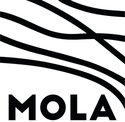Assessment of archaeological resource in aggregate areas on the Isle of Wight
Museum of London Archaeology, 2011. https://doi.org/10.5284/1000178. How to cite using this DOI
Data copyright © Museum of London Archaeology, Isle of Wight Council, Cornwall Council unless otherwise stated
This work is licensed under the ADS Terms of Use and Access.
Primary contact
David
Bowsher
Director of Research
Museum of London Archaeology
Mortimer Wheeler House
46 Eagle Wharf Road
London
N1 7ED
UK
Tel: 020 7410 2285
Resource identifiers
- ADS Collection: 1042
- ALSF Project Number: 4769
- DOI:https://doi.org/10.5284/1000178
- How to cite using this DOI
Overview
Project Summary
The project was undertaken by MOLA and Isle of Wight Council, with funding from the Aggregates Levy Sustainability Fund administered by English Heritage with the aim of improving knowledge of the archaeological resource in aggregate producing areas of the Isle of Wight to facilitate strategic planning decisions and the management of historic environment assets within them. The aggregates resource on the Island was identified from British Geological Survey mapping; extraction shown on historic maps and the BritPits Database; and current minerals permissions and divided into study areas based on the Isle of Wight Historic Environment Action Plan.
A project database of historic environment assets within the aggregates resource was extracted from the Isle of Wight Historic Environment Record and included additional assets from a Backlogs Project of archaeological investigations prompted by past aggregate extraction, National Mapping Programme survey of two areas of the Island and a very few additional entries from the National Monuments Record database. The HER data within the project database was then checked to ensure dating was consistent and enhanced with additional information on the nature of the assets. These changes to the project database resulted in a 27.5% increase in assets of known date, a 22% increase in total assets and the impact upon particular periods was even greater.
The enhanced and updated project database was used to generate asset density figures for an archaeological resource assessment and some clear patterns in the asset densities of different periods were revealed. The Bronze Age and Roman periods had particularly high asset densities and the migration, early medieval and modern periods had low asset densities. Spatially, the highest density study areas are associated with the southern and eastern coast and the central ridge and chalk geologies appear particularly associated with high density areas. However, there is no consistent association between high asset densities and particular geology types and the presence of a particular geology is not therefore sufficient to identify an area with a high density of archaeological assets. This is because asset density typically reflects current understanding of the archaeological resource, with lower density areas being less well understood than high density areas.
The asset densities and accompanying archaeological resource assessment provided the basis for a research strategy and agenda. This identified a number of general research priorities comprising; research into unmapped River Terrace Deposits; extension of the NMP survey across the Island, re-assessment of assets recovered by antiquarians (where possible); and targeted investigation of assets of uncertain date or nature. Further specific research priorities were identified to improve understanding of particular periods. This research framework would be appropriate to any investigation into the archaeology or heritage of the aggregates resource.
The process of historic environment assessment, evaluation (either invasive or non-invasive) and mitigation of any impacts was outlined in the report in terms of the development of future prospection, evaluation and mitigation strategies for assets under threat from proposed future aggregates extraction. In general it was noted that the preliminary desk-based study in the form of a historic environment assessment is likely to be the most effective means of identifying and assessing risk in high density study areas, while site-based invasive or non-invasive field investigation would almost certainly be required in lower density areas. Geoarchaeological, palaeoenvironmental and deeper trenches might be required to evaluate and mitigate impacts on remains within River Terrace Deposits and alluvium. Elsewhere fieldwalking, metal detecting, geophysical survey and trial trenching would be suitable evaluation techniques to determine the archaeological potential and significance of areas where impacts would occur. These impacts could be mitigated by watching brief for areas of low impact or low archaeological potential and significance; open area excavation for large areas of diffuse remains or targeted excavation of localised highly significant remains.
Digital Archive
The digital archive held by the ADS contains the final report, with the following bibliogrpahic reference:
Pethen, H. 2011: Assessment of archaeological resource in aggregate areas on the Isle of Wight. Final Report. Museum of London Archaeology.
Users should note that this 413 page report includes two earlier reports, undertaken as part of the the overall ALSF project, as Appendices:
Molina Burguera, G. and Pethern, H. 2010: Identification and quantification of archaeological projects arising from aggregates extraction in Isle of Wight. Museum of London Archaeology.
Royall, C. 2010: Assessment of Archaeological Resource in Aggregate Areas on the Isle of Wight. Results of NMP Mapping. Historic Environment, Cornwall Council Report No: 2010 R025.
The digital archive also includes the project database of historic environment assets within the aggregates resource extracted from the Isle of Wight Historic Environment Record and including additional assets from the Backlogs Project, National Mapping Programme survey and a very few additional entries from the National Monuments Record database.









